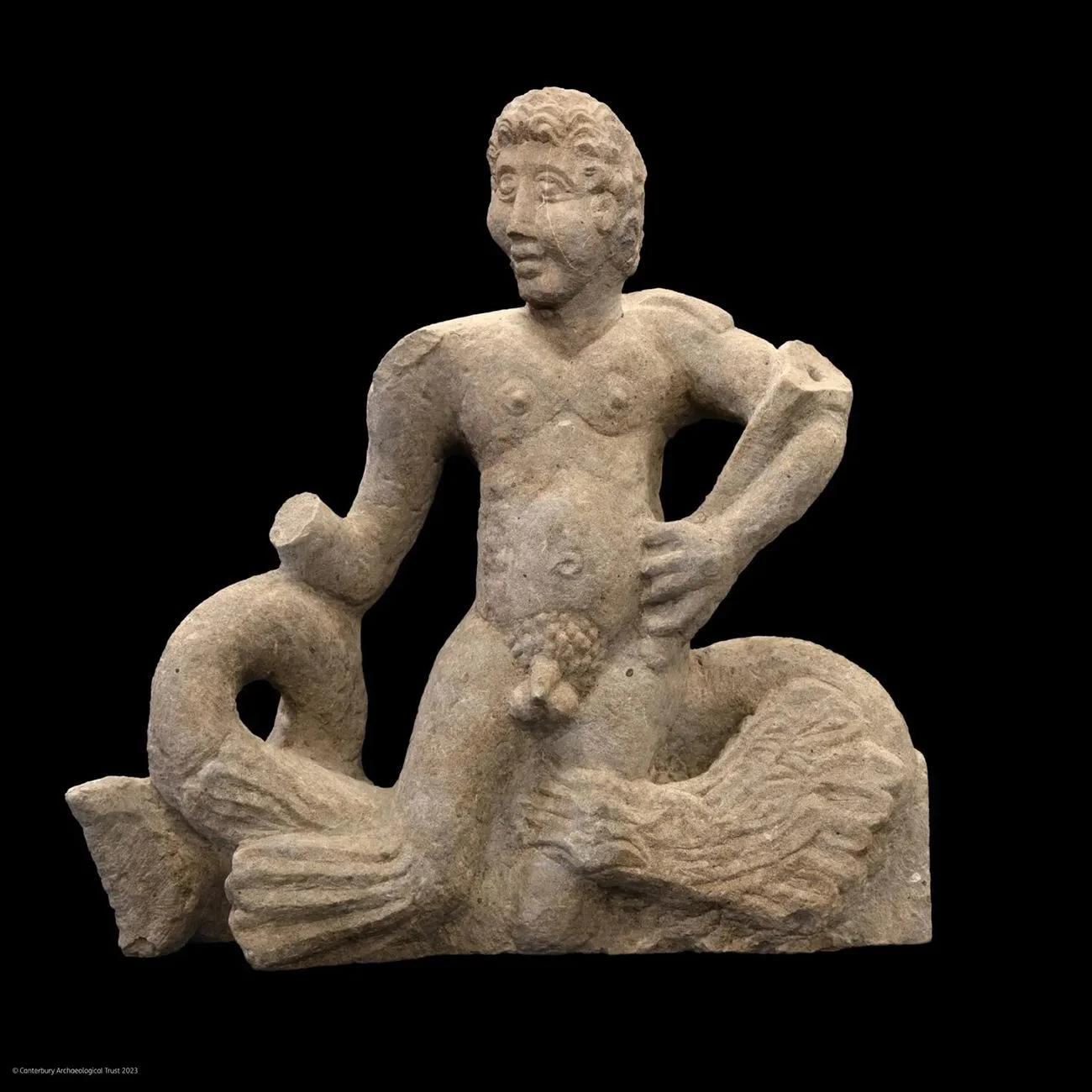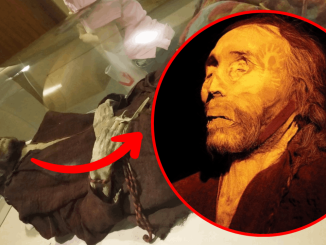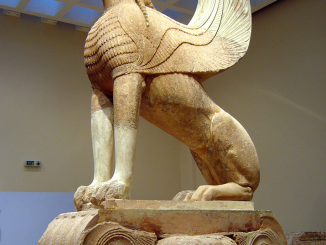Archaeologists from the Canterbury Archaeological Trust (CAT) have unearthed a stunning statue of Triton, the Roman sea god, and a mausoleum dating back more than 1,700 years, during excavations for a housing development near the A2 London Road in Teynham, Kent.


Archaeologists unearth 2,000-year-old Roman statue of Triton in Kent
The Roman statue of the sea god Triton. Credit: Canterbury Archaeological Trust
The excavation, undertaken in preparation for a housing project by Moat Homes and Chartway Partnerships Group, unveiled a wealth of ancient artifacts. In 2017, initial investigations had revealed fragments of chalk wall foundations and two Roman cremation burials, prompting Swale Borough Council to require a more extensive archaeological dig.
CAT led the recent excavations, which exposed a 30-meter square walled enclosure around an approximately 8-meter square structure. Further exploration of the site confirmed that the structure is a Roman mausoleum, supported by the discovery of a Roman coin dating to around 320-330 CE within the demolition debris.
In addition to the mausoleum, the site contained Roman and possibly later burials, some accompanied by grave goods, such as glass vessels. However, the most remarkable find was a unique stone statue depicting Triton, son of Poseidon/Roman Neptune, a god known for his ability to calm the seas with a conch shell.
Archaeologists unearth 2,000-year-old Roman statue of Triton in Kent
The Triton statue, measuring 70 cm in height and width and weighing over 60 kg, was found carefully placed within a disused clay-lined water tank, alongside burnt materials. Archaeologists believe that this ritualistic placement, along with the discovery of other artifacts, suggests the site was a funerary area for a wealthy local family, possibly linked to a nearby Roman villa at Bax Farm.
Dr. Richard Hobbs, Senior Curator of Roman Britain at The British Museum, commented on the significance of the find, stating, “This is a really stunning piece of sculpture, undoubtedly of great significance to our understanding of Roman Britain and its place in the wider Roman Empire. Although a few fragments of Triton sculptures are known from Roman Britain, nothing quite like this has been discovered before.”
The statue has been carefully removed for initial conservation work, revealing intricate details in its craftsmanship. Further research into the statue and the circumstances surrounding its ritual burial is ongoing.
The remains of the mausoleum and precinct walls will be preserved within a roundabout as part of the new housing development. Developers are exploring ways to make these archaeological discoveries accessible to the public, allowing future generations to connect with the rich local history.
Simon Mason, Principal Archaeological Officer at Kent County Council, emphasized the importance of the find in understanding the Roman landscape in the region, calling it a “spectacular discovery” and expressing eagerness for the continued research into the Triton statue and its burial ritual.


